Coast redwoods are naturally adapted to survive wildfire damage
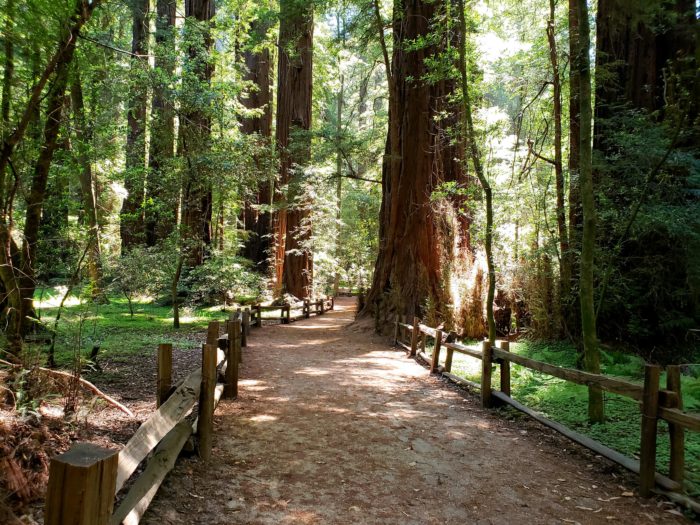
The California wildfires of the past week have reminded us all of the tremendous power of nature. First the heat wave, then the lightning strikes, then dozens of fires. Here at Save the Redwoods League, we’re very concerned about the human toll—the loss of life, homes and infrastructure, so many people displaced from their homes, and so many firefighters still battling these blazes around the clock. Our hearts go out to all the people impacted by these fires.
We’re also saddened to hear about the damage to infrastructure at Big Basin Redwoods State Park and possibly others. Although infrastructure can be rebuilt, their loss impacts how people can visit and access these special places, and replacing them could put a strain on the already taxed California State Parks.
Although California has had some large wildfires in recent years, our coast redwood forests have largely been spared. This week that changed, and several fires have swept through coast redwood forests in the Santa Cruz Mountains, Sonoma County, and Big Sur. Though our primary concern right now remains with those whose lives have been impacted by the fires, we are getting a lot of questions about how the forests themselves have fared. There has been a little reporting on the ground, but overall we don’t have a lot of firsthand information about how the fires have affected the forests as a whole yet. After things calm down, we will hopefully be able to work with our partners to assess fire effects. In the meantime, I’ll share what is known about coast redwoods and fire more broadly.
It’s important to first note that modern fires affect coast redwoods and their giant sequoia relatives differently due to differences in their basic biology as well as differences between the coastal and Sierra Nevada climate. What follows here focuses only on coast redwoods.
Fire resilience of coast redwoods
In general, coast redwoods are really resilient to fire, with exceptionally thick bark that insulates them from the heat. Even if fire consumes their crowns—lethal for most conifers—the trunk of a redwood can sprout back to life. If this happens, they will look really rough for a while and it will take years for their crowns to fill out again, but the tree will have survived.
In cases of extreme heat damage to cambium, the living layer of tissue under the bark, the main trunk might be killed and not even able to sprout, but the tree will likely still sprout from the base. So an ancient giant could die but it will live on in its new shoots. Very extreme heat damage could result in no sprouting at all, but this seems to be pretty uncommon.
I suspect the most likely death in the ancient old-growth trees would be from falling over. I am sure you have seen redwoods with past fire damage, where parts of the tree get hollowed out from successive fires over their long lives. Eventually, a fire will come through and the cumulative structural damage can be so great that they topple.
Though I continue to feel worried for the homeowners and firefighters who are in the midst of all this, I feel cautiously optimistic about the effects of these fires on the forest itself. Old-growth trees have been around long enough to grow very thick bark and the trees are generally widely spaced, at low densities. In addition, in these wetter coastal areas, the fuel on the surface (fallen branches, needles, etc.) actually breaks down relatively quickly, so even in areas that haven’t burned in a very long time, the surface fuel accumulation as a result of fire exclusion over the last century is not as bad as it is in drier places like the Sierra Nevada. Though temperatures and humidities were much hotter and drier than normal along the coast, they still weren’t necessarily as extreme as they can be in other parts of the state.
I want to stress again that we can’t say for sure until we can get out there. And it’s also important to remember that even if many of the trees do survive, there will no doubt be at least some loss of individual beloved trees. But in thinking about the big picture, I remain cautiously optimistic.
Fire effects on second-growth redwoods
Second-growth forests might have a more variable response. They generally have much higher tree density, which means more contiguous fuels that can result in more intense fires. These are somewhat more likely to have their main trunk killed, because they haven’t had time to build up that thick bark. They will then likely sprout new shoots from their base, and in that case the fires could turn back the clock on that forest’s recovery.
At the League we are hoping to get more second-growth forests on a trajectory toward old-growth form and function, and so if those main trunks were killed and they sprouted from their base, it could slow that march down a bit. But even in the second-growth forests, I am hopeful that the burning conditions have left many of those main trunks intact.
Cautious optimism
We do have some evidence from other places to support some cautious optimism. After extensive lightning storms in Northern California in 2008, several old-growth and second-growth forests burned. Almost all of the old-growth main trunks survived, and survival was fairly high in second-growth forests as well. But it’s also important to remember that this is a somewhat different time—the climate has continued to warm, with the last few years setting records. This could mean that the trees were more stressed when they burned in these fires, which can reduce their ability to recover from injury. Our Redwoods and Climate Change Initiative has shown that forests at the edges of the range were more impacted by the recent extreme drought, so I am a bit more concerned about the fire in Big Sur.
It’s going to be a while before it’s safe for us to visit these forests and assess the fire effects, and it will be longer still before we fully understand the short- and long-term impacts on the trees. In the meantime, we will maintain that cautious optimism, knowing that the ancient giants have survived for centuries and lived through many wildfires.

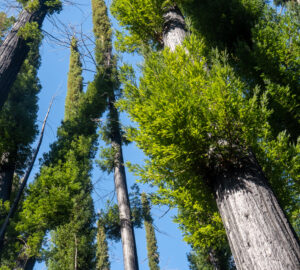
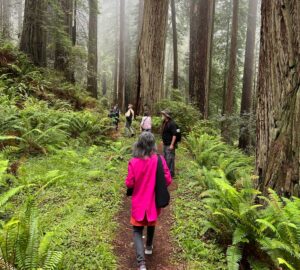
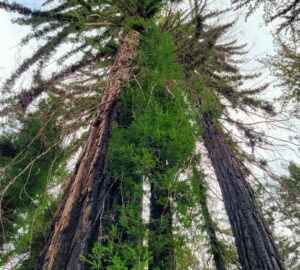
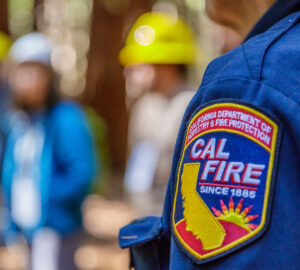
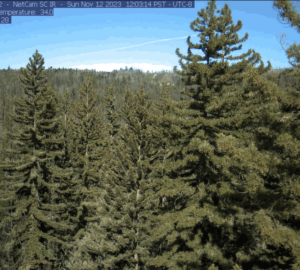

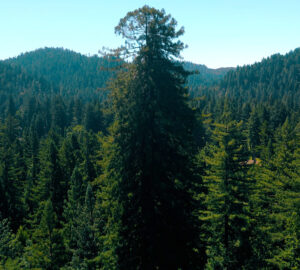
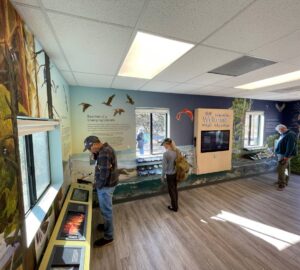
4 Responses to “Cautious optimism for coast redwoods amid fires”
Brian Dean
I had a few redwoods burn on my property in Boulder Creek. They are starting to grow fuzz on the trunks and sampling’s around the base. I assume this is a good sign. I purchased a moisture meter and stuck it into the tree where I cut into the tree with a hatchet. Does anyone know how much moisture it should read? The trees got very hot from my house burning down. The front of some trees close to the house location are below 10% however on the back of the tree opposite the house location the meter read 20% and more.
Steve
Have any fires occurred in the recent past in redwood forests where the conditions discussed have been studied?
Save The Redwoods League
Hi Steve. Yes, that is where much of the information from the blog was gathered. Several studies were done after a strong of lightning-ignited fires in 2008. That year the fires burned in June, so it was a little earlier and cooler, so a little less high severity. They generally found that coast redwoods were vigorously sprouting back to life.
Chris
Thank you for all the work, I’ll continue to work to protect our beautiful redwoods
I’m saddened for all the people and animals impacted
I’m keeping my fingers crossed for the success of our brave fire crews, stay safe, thank you
Butano SP camper